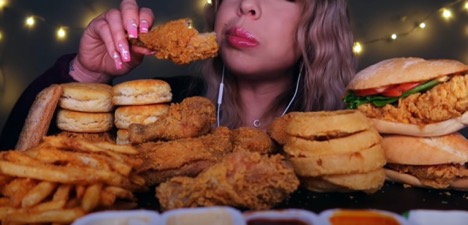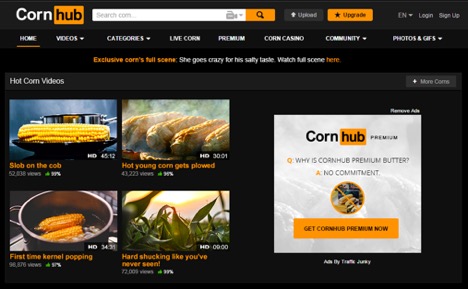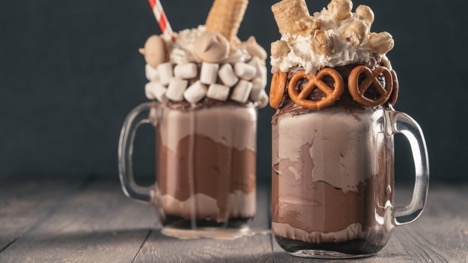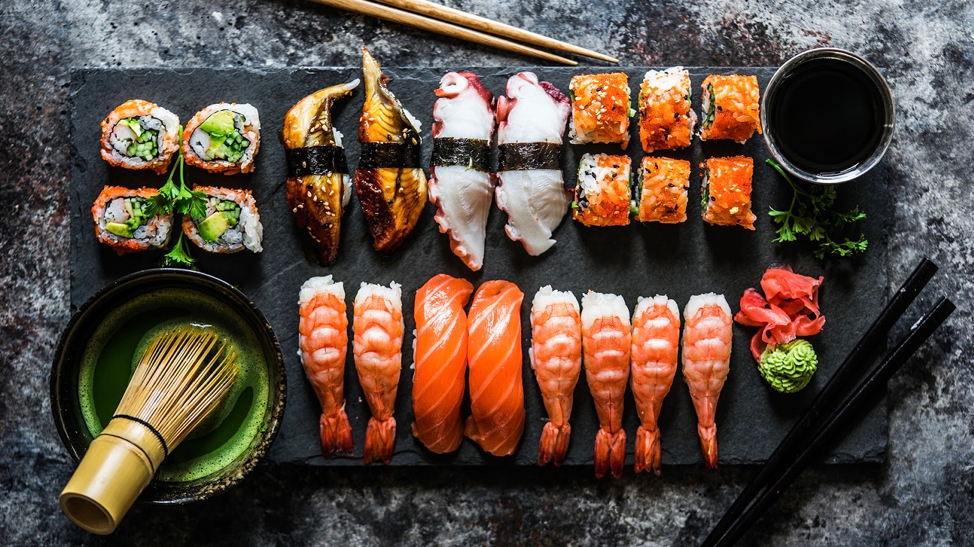By Cecilia Zhang, Lawrence Rowley, and Oliver Xu

So… What is “Food Porn”?
If we delve into history, we can find that this term was first coined by Rosalind Coward in her 1984 book Female Desire. However, what is more intriguing is, why was it coined in such a way? What are the implications of including the word “porn”? In fact, when you hear the words “food porn,” you probably think or feel something different than when you hear “food art.” What you may think of is something indulgent, something mouth-watering, or extremely and irresistibly desirable. However, does the involvement of “mouth-watering bodily pleasure” mean that food porn isn’t art? Or are the two conflated in some way? In fact, is today’s idea of food porn different than when it was first coined? Here, we will discuss the aesthetics of food porn.
Are all pictures of food… food porn?

Rosalind Coward may have had a more specific idea, but nowadays, it seems that almost any picture or media of food can be considered food porn. For example, when one searches #foodporn on Instagram, an extreme variety of food pops up. This hashtag is one of the most widely used tags on just about any picture of food. There almost doesn’t seem to be particular foods or accounts that are the sole example of what defines food porn as a whole. Some may consider certain media food porn, and some may not, and just about anyone can post it. As an example, I myself really enjoy burgers and so upon seeing burgers on media, I salivate, and I crave them. Therefore, to me, burgers are a form of food porn. That, however, does not mean that the media of burgers is food porn for everyone. Would juicy pictures of burgers be appetizing to a vegetarian? Probably not. In fact, many vegetarians may feel disgusted looking at a picture of a large juicy and greasy burger (see Korsmeyer 2002 on the paradox of aversion). Food porn may be relative to each individual, just like how some people find some art pieces attractive and others ugly. After all, everyone grew up within a different background and culture, and therefore eats differently and enjoys different types of food.
Although many people think that food porn is only within the realm of media, I would argue that food porn can exist beyond it. For example, at many bakeries, different pastries are displayed through the glass for customers to look at. This is also food porn because they are displaying such food to allow customers to enjoy and salivate to. In fact, food itself that is served to you or that you cook can also be considered food porn as long as one enjoys looking at it. This raises the question of whether other senses can be factored in when considering what food porn is.
Let’s take a look at ASMR. As seen with the rise of these auditory stimulating videos, many of which are of people eating different types of food, it is clear that people can enjoy food porn not only through visual senses. The craving-inducing crunches and textures featured in ASMR videos depict yet a different way for viewers to indulge food – through sound. This means that smell and touch can possibly also be considered when asking the question “what is food porn?” You may ask yourself: do you enjoy smelling or feeling food, without necessarily eating it?
Although we can conclude that the meaning of what is or isn’t food porn is highly subjective, we must still entertain the question: are there more popular definitions of food porn? We may want to take a closer look at the “top” page of Instagram’s #foodporn. Although just about any food image could appear in this tag (fruits here and there, numerous diverse cultural cuisines, homemade dishes, amateur baking), we may begin to notice that a large majority of the popular ones are greasy, buttery, or sweet. Many of the top photos are pastries, sweets, baked and fried goods. Could popularity help us get a better grasp of all the things that make food porn?
What’s Trending?

“Food porn” as a term may have existed since the 1980s, but clearly reached mass popularity due to the modern phenomenon of social media. People love sharing every little bit of their lives to the world these days, and there is no exception for one of the biggest parts of our day – eating. In fact, “eating” may be such a large factor in our lives that food is one of the most favorite things for people to share. And of course, this comes hand in hand with one the other things people love to do on social media – following each other’s examples. This results in what we call: Food trends.
However, do all food trends count as “food porn”? As we covered earlier, this may not be the case… subjectively. According to the Real Simple Magazine’s article, “The 12 Biggest Food Trends of 2019,” such items on the list include oat milk, impossible burgers, and acai bowls. This, along with other trends such as kombucha and avocado toast imply that “health” (or the perception thereof) is something trend worthy. However, most people would probably argue that health is not exactly something “porn” worthy. And despite these popular healthy trends, it appears that unhealthy foods (ones that are more popularly considered food porn) seem to be the more favored side of social media food sharing. On Belle Communication’s “10 Restaurants That Are Killing it on Instagram,” their list of popular restaurant social media pages consists of one healthy option, and 9 unhealthy ones including fast food, street food, steak, ice cream, donuts, and coffee. Other not-so-healthy trends such as those presented on the food blog Tasty include whipped coffee, souffle pancakes, boba tea, and milkshakes with excess amounts of garnish (pictured).
So, what exactly does it say about food trends that the most “favorited” ones on social media are not the same as the most “eaten” ones? Well, it’s simple. Instagram-able food is amazing to look at. We love to indulge with our eyes, only. Some of these trends, such as HUGE food, in fact, may not even be so practical to eat, if you don’t want a stomachache, that is. Instagram-able food is so indulgent, that merely looking at it with your eyes is enough. Food porn is more about the looking, than the eating… to the point where some foods are made specifically for social media. “Rainbow food” is a good example of this phenomena. There is nothing tasty about the rainbow, only pretty. Furthermore, mukbang is another telling trend. Although many of us probably would not like to sit and eat 12 hamburgers in one go, we sure love to see someone else do it. Social media has put food into a pretty, untouchable frame. “Food porn” is something we consume, only on the screen. However, now that food is removed from the act of bodily indulgence and pushed back into a distal sense, does it qualify as “Art”?
Is Food Porn Art?

The recent growth of social media, along with evolving technology, has made it easier than ever to share images with the digital world. Phone cameras have become very high quality and include features that only high-tech cameras had in the past. When a story of a beautiful array of sushi comes up on your feed you may think, “That looks delicious,” or… “Where can I get that?” You’re probably right that the sushi is delicious. However, the perfect filter, lighting, and flash may have affected how delicious that sushi looked. Photographing food to be aesthetically pleasing has become increasingly popular and many have asked the question: Can food be considered art? And if so… how exactly does food porn fit into that category?
Some may say that food porn doesn’t fall in the category of art. Popular beliefs against food as art include the idea that food isn’t a form of expression and can’t tell a story (Deresiewicz 2012, cited in Boisvert & Heldke 94). In their book Philosophers At Table, Raymond Boisvert and Lisa Heldke argue that we should open our minds to the possibility of food as a consummatory art (Boisvert & Heldke 86). I find that food porn can be considered as art and, contrary to some beliefs, involves a good deal of expression. For example, the aforementioned plate of sushi (pictured), top view, centered, high contrast and saturation, with neatly and purposefully placed straight rows could suggest not only something delicious, but also refinement, elegance, and harmony. An angled photo of a stream of milk splashing into a bowl of cereal could instead represent anticipation, eagerness, and excitement, with a feel of familiarity. In Elizabeth Entenman’s blog post, “How To Get The Most Likes For Your Food Instagram Posts,” she shares tips on getting more likes on food pictures, many of which are improving aesthetic qualities. Entenman’s article includes sections on lighting, angle, and editing photos suggesting that the sharpness, contrast, color balance, and saturation of your pictures is very important. As the article is centered around people literally liking the reader’s food pictures, it portrays the message that food porn is a way for us to share our work in hope that others will understand it and enjoy it. We want the people who see our food pictures to recall similar types of emotions to those that were felt when we consumed the food ourselves. I argue that the artists of more traditional art had the same goal in mind. Food has now entered the realm of photography, and just so happens to be a subject that many people love to partake in.
Art is described as the expression of human creativity and imagination and often thought of as something appreciated for its uniqueness, aesthetic qualities, and identity. Food and food porn, more specifically, include many of these qualities, and allow the photographer to express themselves. Just as more traditional forms of art, such as paintings and sculptures, aren’t all the same, neither is food porn. Although we can relate viewing food porn, scrolling through images of tasty meals and treats, to strolling through an art gallery full of beautiful paintings, there is something more attached… the feeling of familiarity. Each person has their own interests and can interpret each image or painting in their own way, but we can all relate to good food. The photographer and painter each had to decide on the piece’s aesthetic elements and likely thought about how others would view it. It takes an artistic mind to know which food images are best to display and an artistic eye to make the images aesthetically pleasing, and translatable. In other words, there is indeed art in the creation and display of food porn.
Bibliography:
Allen, Heather. “10 Restaurants That Are Killing It On Instagram.” Belle Communication. 20 Aug. 2018.
Boisvert, Raymond D. and Lisa M. Heldke. Philosophers at Table: On Food and Being Human. London: Reaktion Books, Ltd., 2016.
Coward, Rosalind. Female Desire. London: Paladin Books, 1984.
Deresiewicz, William. “A Matter of Taste?” The New York Times. 26 Oct. 2012.
Entenman, Elizabeth. “How To Get Instagram Likes For Your Food Instagram Posts.” So Yummy. 22 Feb. 2019.
Gold, Betty. “12 Biggest Food Trends of 2019.” Real Simple. 25 Sept. 2019.
Korsmeyer, Carolyn. “Delightful, Delicious, Disgusting.” Journal of Aesthetics and Art Criticism, vol. 60, no. 3 (2002), pp. 217–225.
Kugel, Allison. “How ‘Food Porn’ Posted on Social Media Has Become an Industry.” Entrepreneur. 1 June 2017.